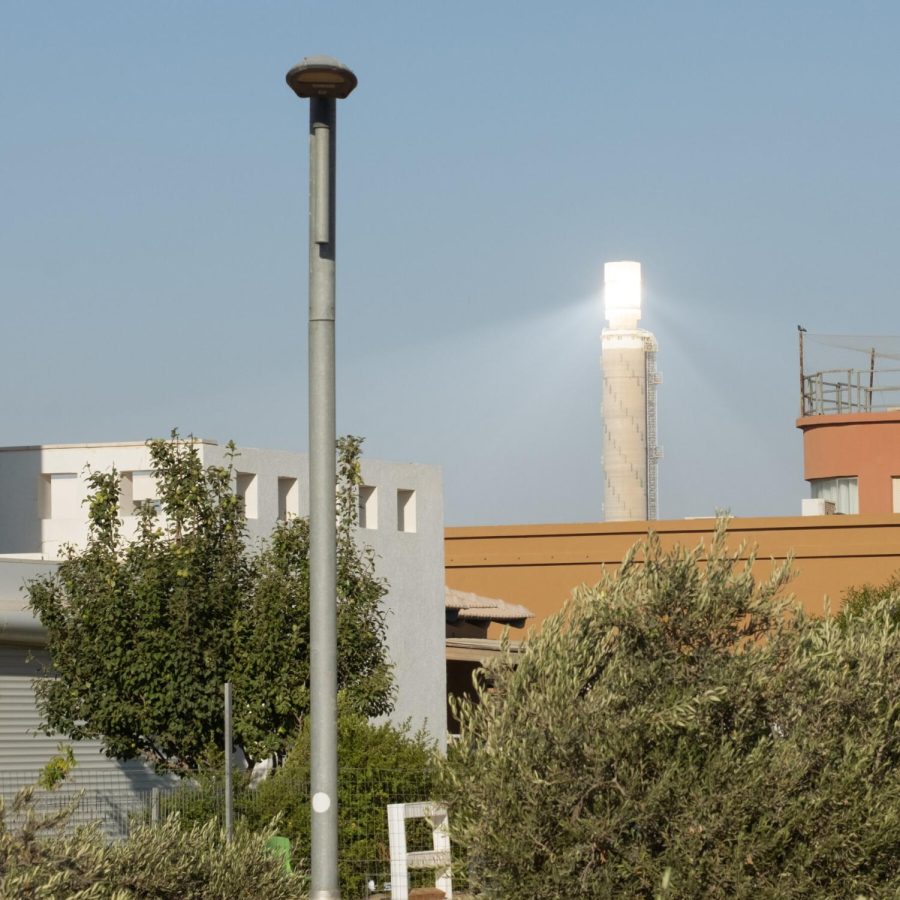Israel’s “Second Sun”
The purpose of this solar tower is to conduct solar energy for Israel, propelling Israel to a higher global standard.
The “Eye of Sauron” watching over the Ashalim community.
In its 75 years of independence, Israel, a frequently targeted, often delegitimize nation, has created a name for itself through innovation. Lately, citizens are talking about a more visible sign of innovation coming from their very own desert.
Distinguished for its technological advancements such as the app Waze and the creation of the “firewall”, Israel has become increasingly environmentally innovative in recent years.
In creating innovation, Israel faces many ecological obstacles as nearly 60% of the state is covered by the vast Negev Desert. Consisting of hundreds of miles of sand and rock, most of this land is inhabitable and lacks resources that would otherwise be available to other countries with different terrain. Another factor is Israel’s military necessity. As a result, most of the area of the Negev is used for Israeli Defense Force (IDF) training.
The Ashalim Power Plant is a multi-million dollar project created to conduct solar energy for the state, utilizing one of the resources the desert provides: the sun.
The structure, named after the nearby kibbutz of Ashlalim, is made up of a 800 foot tall tower, complete with a reflective top constructed by over 50,000 mirrors. The purpose of this solar tower is to conduct solar thermal energy, a process in which water is boiled by heat from the sun to create steam, which powers a generator to create electricity for Israeli citizens.
So far, this project has proved to conduct electricity for tens of thousands of homes, though it still only conducts under 20% of nationwide electricity.
According to Israeli citizens, Israel has yet to hit the mark on this project.
“The Eye of Sauron ” as Ashalim citizens have dubbed it, has faced controversy since its establishment in September of 2019. Many locals, especially those part of the Ashalim community, whose backyards overlook the tower, dislike the permanent eyesore.
A shopkeeper located within the nearby community describes the structure as a “second sun”. Another citizen of Ashalim suggests a different location, “Maybe they could have taken it 50 miles inside the desert”.
Other criticisms surrounding the structure are complaints from Israeli’s highway 40 drivers on the blinding effects this tower emits. Moreover, while creating a renewable energy source, other environmental damages are being caused as harm to birds, who are either burned or killed when flying near the tower.
Opinions on the tower are not all negative, as it has created economic growth for the surrounding communities. Mr. Doron, Ashalim’s regional mayor, stated that the project brought at least 70 new jobs to the remote -and oftentimes neglected- region in a New York Times Report.
Regardless of public opinion, which is seemingly mixed, innovations such as these propel Israel to a higher global standard and prove to the world the legitimacy of the state.




